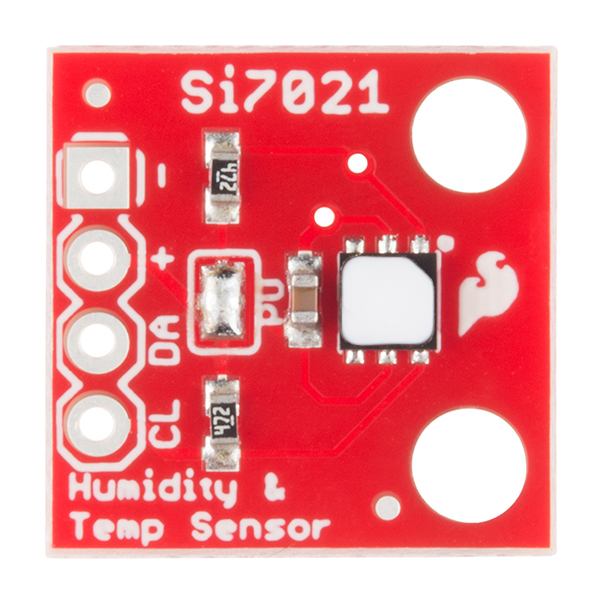Si7021 Humidity and Temperature Sensor Hookup Guide
Board Overview
Let's go over the Si7021 Breakout in detail.
Si7021 Details:
- Uses the I2C interface
- Typical humidity accuracy of ±2%
- Typical temperature accuracy of ±0.3C
- Operates from 0 to 100% humidity but this sensor isn’t recommended for harsh environments where it could come in contact with water (such as rain)
- 3.3V sensor - use inline logic level converters or 10kΩ resistors to limit 5V signals
- Only one Si7021 sensor can reside on the I2C bus at a time
Pull-up Resistors
This breakout board has built-in 4.7KΩ pull up resistors for I2C communications. If you're hooking up multiple I2C devices on the same bus, you may want to disable/enable the pull-up resistors for one or more boards. On the Si7021, the pull-ups are enabled by default. To disable them, simply use some solder wick to remove the solder on the jumper labeled PU. This will disconnect the resistors from VCC and from the I2C bus.
PTFE Filter
The tiny white cover on the IC is known as a Polytetrafluorethylene (PTFE) Membrane Filter. It keeps moisture out but allows humidity in. This filter is very low-profile, hydrophobic and oleophobic, and excludes particulates down to 0.35 microns in size.
From the Si7021 datasheet:
"Because the sensor operates on the principal of measuring a change in capacitance, any changes to the dielectric constant of the polymer film will be detected as a change in relative humidity. Therefore, it is important to minimize the probability of contaminants coming into contact with the sensor. Dust and other particles as well as liquids can affect the RH reading."

